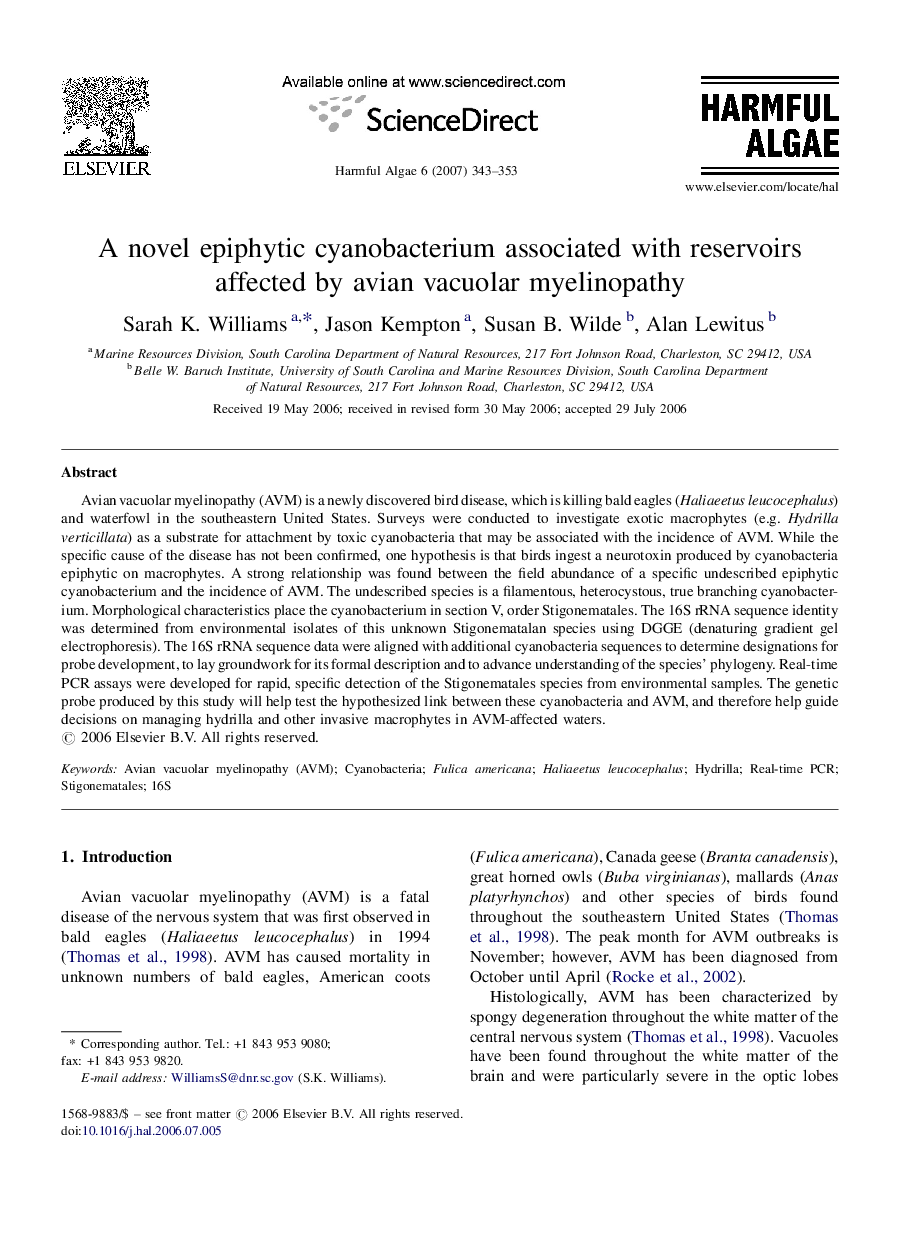| Article ID | Journal | Published Year | Pages | File Type |
|---|---|---|---|---|
| 4546072 | Harmful Algae | 2007 | 11 Pages |
Avian vacuolar myelinopathy (AVM) is a newly discovered bird disease, which is killing bald eagles (Haliaeetus leucocephalus) and waterfowl in the southeastern United States. Surveys were conducted to investigate exotic macrophytes (e.g. Hydrilla verticillata) as a substrate for attachment by toxic cyanobacteria that may be associated with the incidence of AVM. While the specific cause of the disease has not been confirmed, one hypothesis is that birds ingest a neurotoxin produced by cyanobacteria epiphytic on macrophytes. A strong relationship was found between the field abundance of a specific undescribed epiphytic cyanobacterium and the incidence of AVM. The undescribed species is a filamentous, heterocystous, true branching cyanobacterium. Morphological characteristics place the cyanobacterium in section V, order Stigonematales. The 16S rRNA sequence identity was determined from environmental isolates of this unknown Stigonematalan species using DGGE (denaturing gradient gel electrophoresis). The 16S rRNA sequence data were aligned with additional cyanobacteria sequences to determine designations for probe development, to lay groundwork for its formal description and to advance understanding of the species’ phylogeny. Real-time PCR assays were developed for rapid, specific detection of the Stigonematales species from environmental samples. The genetic probe produced by this study will help test the hypothesized link between these cyanobacteria and AVM, and therefore help guide decisions on managing hydrilla and other invasive macrophytes in AVM-affected waters.
